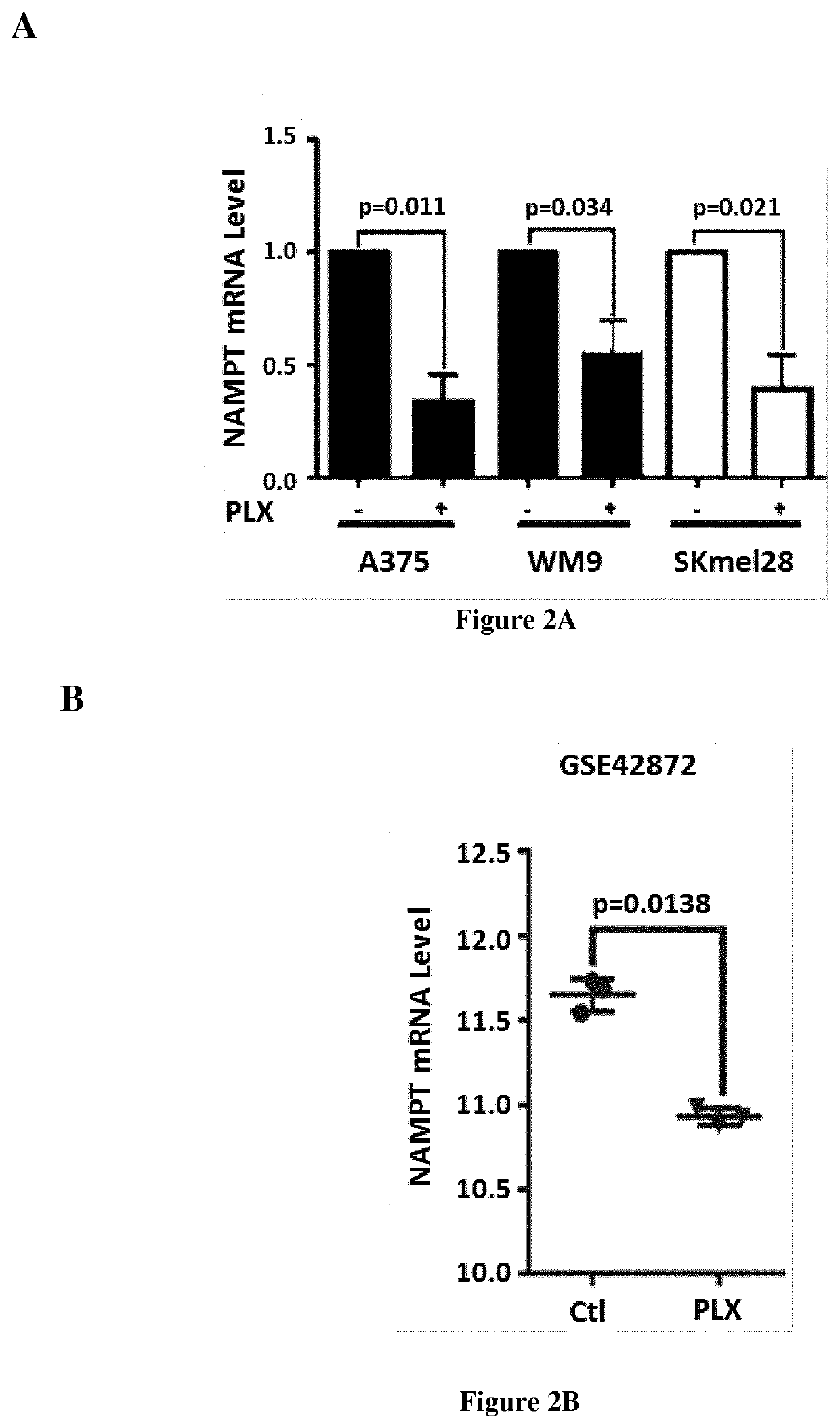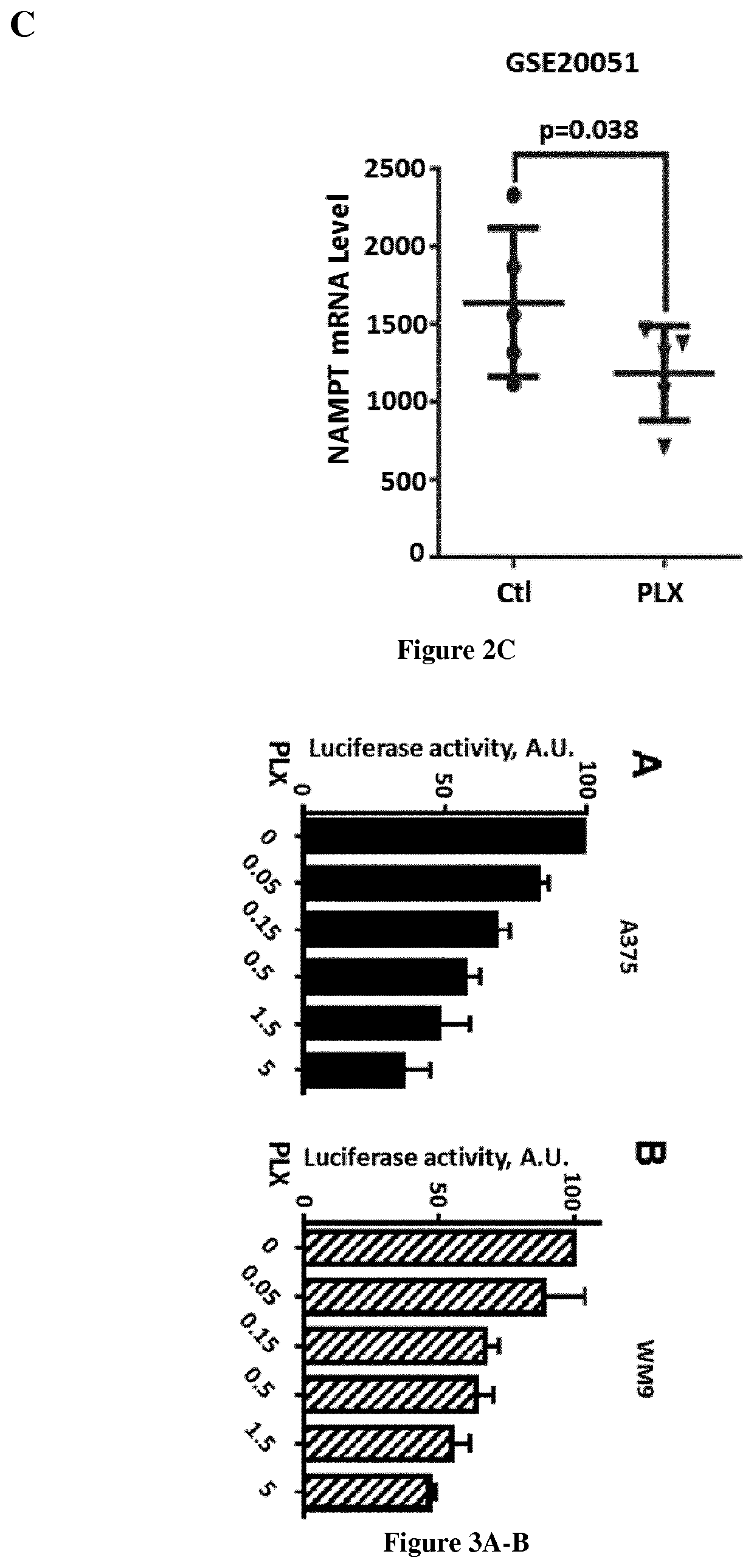Methods and compositions for treating melanoma resistant
a technology of melanoma and composition, applied in the field of cancer, can solve the problems of preventing the efficacy of the drug, supporting tumor growth, and treating patients with braf-mutated melanoma
- Summary
- Abstract
- Description
- Claims
- Application Information
AI Technical Summary
Benefits of technology
Problems solved by technology
Method used
Image
Examples
example
[0095]Material & Methods
[0096]Cell Cultures and Reagents
[0097]Human melanoma cell lines and short-term cultures derived from different patients with metastatic malignant melanoma cells were grown in DMEM supplemented with 7% FBS at 37° C. in a humidified atmosphere containing 5% CO2. PLX4032-sensitive and PLX4032-resistant melanoma cells were previously described (Bonet et al. 2012; Ohanna et al. 2014). Lipofectamine™ RNAiMAX and opti-MEM medium were purchased from Invitrogen (San Diego, Calif., USA). FK866 was obtained from Sigma, U0126 and GSK1120212 were purchased from Euromedex, and PD98059 and SCH77294 were obtained from Selleck Chemicals. The STAT5 inhibitor (CAS 285986-31-4) was purchased from Sigma. Intracellular NAD+ was measured using the NAD / NADH Quantitation Kit from Sigma according to the manufacturer's instructions.
[0098]Metabolomic Profiling
[0099]Briefly, samples were prepared using the automated MicroLab STAR® system (Hamilton Company). Recovery standards were added ...
PUM
| Property | Measurement | Unit |
|---|---|---|
| temperature | aaaaa | aaaaa |
| temperature | aaaaa | aaaaa |
| temperature | aaaaa | aaaaa |
Abstract
Description
Claims
Application Information
 Login to View More
Login to View More - R&D
- Intellectual Property
- Life Sciences
- Materials
- Tech Scout
- Unparalleled Data Quality
- Higher Quality Content
- 60% Fewer Hallucinations
Browse by: Latest US Patents, China's latest patents, Technical Efficacy Thesaurus, Application Domain, Technology Topic, Popular Technical Reports.
© 2025 PatSnap. All rights reserved.Legal|Privacy policy|Modern Slavery Act Transparency Statement|Sitemap|About US| Contact US: help@patsnap.com



